With over a decade in the plastics industry, from formulating compounds to troubleshooting production lines, I’ve seen my fair share of experiments—some brilliant, some disastrous. One question that keeps popping up, especially among manufacturers and product designers, is what happens when you mix acrylonitrile butadiene styrene (ABS) and thermoplastic elastomer (TPE). It’s a natural curiosity: both materials are widely used, versatile, and often found in similar applications like automotive parts, consumer electronics, and medical devices. But blending them together? That’s where things get tricky. In this article, I’ll draw on my hands-on experience to explain the outcomes of mixing ABS and TPE, whether through blending, overmolding, co-extrusion, or recycling, and share practical tips to achieve the results you’re aiming for.

Understanding ABS and TPE: A Quick Primer
Before we dive into the results of mixing these materials, let’s clarify what ABS and TPE are and why someone might want to combine them.
Acrylonitrile Butadiene Styrene (ABS)
ABS is a rigid, tough thermoplastic known for its high impact resistance, dimensional stability, and ease of processing. It’s a copolymer of acrylonitrile, butadiene, and styrene, offering a balance of strength, rigidity, and surface finish. ABS is a staple in injection-molded parts like keyboard housings, car dashboards, and LEGO bricks. Its processing temperature typically ranges from 220–260°C, and it’s valued for its durability and cost-effectiveness.
Thermoplastic Elastomer (TPE)
TPE is a family of flexible, rubber-like polymers that combine elasticity with plastic-like processability. Common types include styrenic block copolymers (SBCs), thermoplastic polyurethanes (TPUs), and thermoplastic vulcanizates (TPVs). TPEs are loved for their soft-touch feel, flexibility, and resilience, making them ideal for grips, seals, wearable bands, and soft components. They process at 180–220°C and are often overmolded onto rigid plastics like ABS.
Why Mix ABS and TPE?
Combining ABS and TPE is appealing for several reasons:
Overmolding: Adding a soft TPE layer onto a rigid ABS base for ergonomic grips or vibration damping.
Blending: Mixing ABS and TPE pellets to create a hybrid material with tailored properties.
Co-Extrusion: Forming multi-layered products like flexible tubing or seals with ABS’s strength and TPE’s elasticity.
Recycling: Reprocessing ABS-TPE scraps to reduce waste in manufacturing.
I recall a project where a client wanted to blend ABS and TPE to create a semi-flexible tool housing. Their initial attempts led to a brittle, uneven material, highlighting the need for a better approach. Let’s explore what happens in each mixing scenario and how to make it work.

Outcomes of Mixing ABS and TPE
The results of combining ABS and TPE depend on the method used—blending, overmolding, co-extrusion, or recycling. Each approach has unique outcomes, benefits, and challenges.
1. Physical Blending (Mixing Pellets)
Blending ABS and TPE pellets in a single molding or extrusion process is tempting for its simplicity, but the results are often disappointing:
Immiscibility: ABS (a rigid, amorphous polymer) and TPE (an elastomeric, often polar material) are chemically incompatible due to differences in polarity and molecular structure. This leads to phase separation, where the materials form distinct domains rather than a uniform blend.
Poor Mechanical Properties: The blend may be brittle, weak, or prone to delamination because ABS and TPE don’t bond well at the molecular level. For example, a 50/50 ABS-TPE blend might crack under light stress.
Inconsistent Appearance: The part may show streaks, swirls, or cloudy patches due to poor mixing. I’ve seen blended parts with a marbled look, unsuitable for most applications.
Processing Issues: ABS (220–260°C) and TPE (180–220°C) have different melt temperatures and viscosities, causing uneven flow, burn marks, or incomplete mold filling.
A factory I worked with tried blending ABS and SBC-based TPE for a semi-flexible housing. The result was a brittle, streaky part that failed quality checks. We pivoted to overmolding, which proved far more effective.
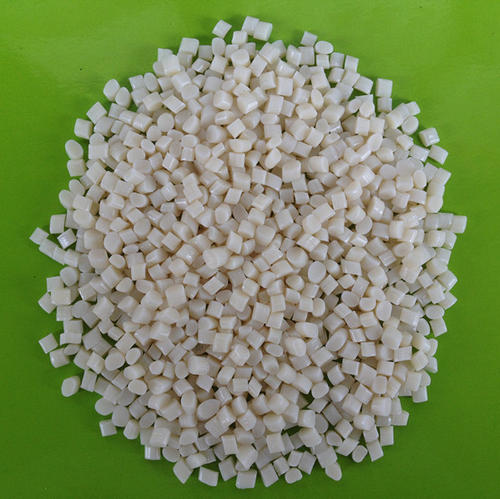
2. Overmolding TPE onto ABS
Overmolding—molding a soft TPE layer onto a rigid ABS substrate—is the most common and successful way to combine these materials:
Strong Bond with Proper Selection: Certain TPE grades, like SBCs or TPUs formulated for ABS, can bond well through chemical adhesion or mechanical interlocking. Texturing the ABS surface enhances grip.
Enhanced Functionality: The combination leverages ABS’s rigidity and TPE’s softness, ideal for handles, buttons, or shock-absorbing components. For example, a TPE-overmolded ABS phone case offers durability and a comfortable grip.
Professional Finish: Overmolding creates a seamless, high-quality look, with TPE adding a soft-touch feel and ABS providing structural support.
Challenges: Without a compatible TPE grade or proper surface preparation, the TPE may peel off or delaminate. SBC-based TPEs are often the best choice for ABS due to their styrene content, which improves bonding.
I helped a client producing ABS tool handles with TPE grips. By using an SBC-based TPE and roughening the ABS surface, we achieved a durable bond that withstood heavy use.
3. Co-Extrusion of ABS and TPE
Co-extrusion involves processing ABS and TPE simultaneously to create multi-layered products, like tubing or profiles. The results can be effective with careful planning:
Layered Structure: ABS provides rigidity and chemical resistance, while TPE adds flexibility or a soft surface. For example, a TPE-ABS tube might have a rigid ABS outer layer and a soft TPE inner layer.
Adhesion Challenges: The materials require compatibilizing agents (e.g., maleic anhydride-grafted ABS) or tie layers to prevent layer separation. Without these, delamination is common.
Processing Complexity: Dual extruders must synchronize melt temperatures (ABS: 220–260°C; TPE: 180–220°C) and flow rates to avoid defects like warping or uneven layers.
Applications: Used in automotive trim, medical tubing, or construction seals.
A manufacturer I consulted for co-extruded ABS-TPE weatherstripping. Initial attempts failed due to delamination, but adding a tie layer and adjusting extruder settings created a durable, flexible product.
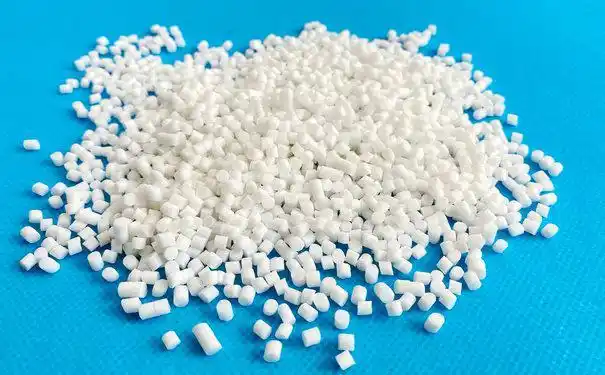
4. Recycling Mixed ABS and TPE
Mixing ABS and TPE scraps during recycling is common to minimize waste, but the outcomes are often subpar:
Degraded Quality: Recycled blends have inconsistent properties, like reduced toughness, poor elasticity, or brittleness, due to immiscibility.
Limited Applications: The mix is suitable only for low-performance parts, like non-critical spacers or fillers, not high-quality components.
Processing Issues: Different melt behaviors can cause clogging, degradation, or uneven flow in the extruder.
Sorting Challenges: ABS and TPE have similar densities, making separation difficult. Infrared spectroscopy or manual sorting is often needed.
A recycling facility I worked with reprocessed ABS-TPE scraps from electronics housings. The resulting material was too weak for reuse in similar applications, so they used it for low-grade brackets.
Challenges of Mixing ABS and TPE
Combining ABS and TPE presents several hurdles, which I’ve seen challenge even experienced teams:
Chemical Incompatibility: Their different polarities (ABS: moderately polar; TPE: often polar or non-polar) lead to weak bonds or phase separation in blends.
Processing Mismatch: Disparate melt temperatures and viscosities complicate molding or extrusion, causing defects like burn marks or warping.
Cost of Optimization: Compatibilizers, surface treatments, or specialized TPE grades add cost and complexity.
Performance Trade-Offs: Blends sacrifice ABS’s strength or TPE’s elasticity, limiting their use in demanding applications.
Recycling Limitations: Mixed scraps are hard to reprocess into high-quality materials, reducing sustainability benefits.

How to Successfully Combine ABS and TPE
Based on my experience, here are practical steps to achieve the best results when mixing ABS and TPE:
1. Select Compatible Materials
Choose a TPE grade designed for ABS compatibility, like SBC-based TPEs or TPUs with styrene content. Suppliers like Kraton, Teknor Apex, or BASF offer tailored grades.
Use ABS grades with consistent melt flow indices (MFI) to match the TPE’s processing behavior. High-impact ABS often bonds better than general-purpose grades.
Request adhesion test data from your TPE supplier to confirm compatibility with your ABS.
2. Optimize for Overmolding
Texture the ABS Surface: Use sandblasting, chemical etching, or mold texturing to create a rough surface for better mechanical interlocking.
Apply Adhesion Promoters: Use primers (e.g., 3M Primer 94) or plasma treatment to increase ABS’s surface energy, enhancing TPE adhesion.
Control Mold Temperatures: Keep the ABS substrate at 50–70°C and the TPE at 20–40°C to promote bonding without distortion.
Design for Bonding: Incorporate undercuts, grooves, or interlocking features in the mold to strengthen the TPE-ABS interface.
3. Use Compatibilizers for Blending or Co-Extrusion
Add maleic anhydride-grafted ABS or styrene-based compatibilizers to improve miscibility in blends or co-extruded layers. Typical dosage is 2–5% by weight.
Test the blend’s mechanical properties (e.g., tensile strength, elongation) to ensure it meets requirements.
Work with your supplier to select the right compatibilizer for your specific ABS-TPE combination.
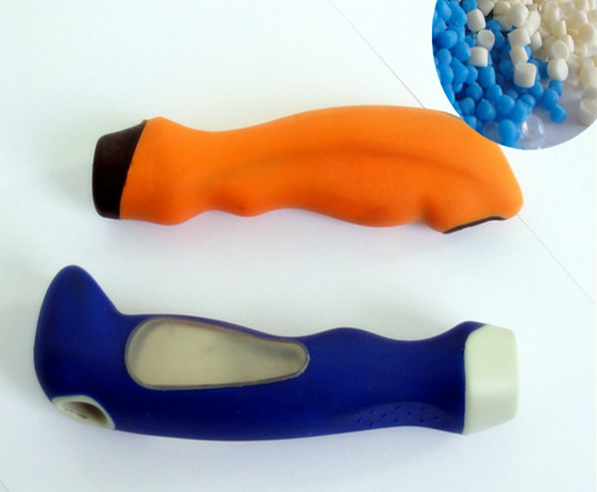
4. Fine-Tune Processing Parameters
Match Melt Temperatures: Set the ABS barrel at 220–260°C and the TPE barrel at 180–220°C, adjusting to avoid degradation or poor flow.
Control Injection Speed: Use moderate speeds to prevent shear heating or trapped air, which can cause surface defects.
Optimize Cooling: Ensure uniform cooling to avoid warping or residual stresses at the TPE-ABS interface.
Adjust Back Pressure: Use 50–100 bar to improve material mixing and reduce gas bubbles.
5. Test Extensively
Conduct peel tests (e.g., ASTM D903) for overmolded parts to verify bond strength.
Perform tensile and impact tests on blends to assess mechanical performance.
Simulate environmental conditions—heat, humidity, UV, or chemicals—to ensure long-term durability.
Test with multiple batches to account for material variations.
6. Plan for Recycling
Segregate Scraps: Use infrared sorting or manual separation to keep ABS and TPE scraps apart for better recycling quality.
Use Compatibilizers in Regrind: Add compatibilizers to recycled blends to improve processability and properties.
Limit Regrind Use: Restrict mixed ABS-TPE regrind to low-performance applications to avoid quality issues.

Comparison Table of ABS and TPE Mixing Methods
Here’s a table summarizing the methods of combining ABS and TPE and their outcomes:
|
Method |
Description |
Benefits |
Challenges |
|---|---|---|---|
|
Physical Blending |
Mixing ABS and TPE pellets for molding |
Simple, cost-effective |
Poor compatibility, weak properties |
|
Overmolding |
Molding TPE onto ABS substrate |
Strong bond, enhanced functionality |
Requires compatible TPE, surface prep |
|
Co-Extrusion |
Forming multi-layered ABS-TPE products |
Layered properties, durable |
Needs compatibilizers, complex setup |
|
Recycling |
Reprocessing ABS-TPE scraps |
Reduces waste, cost-saving |
Inconsistent quality, sorting difficulties |
This table offers a quick reference, but let’s see how these methods play out in practice.
Real-World Examples of ABS and TPE Combinations
I’ve helped clients across industries combine ABS and TPE. Here are two examples:
Consumer Electronics Housing: A manufacturer overmolded SBC-based TPE onto an ABS keyboard housing for a soft-touch border. Initial peeling issues were resolved by texturing the ABS and using a TPE grade optimized for ABS, resulting in a durable, premium feel that passed drop tests.
Recycled Automotive Parts: A factory blended ABS-TPE scraps from dashboard components to produce low-cost clips. The blend was brittle until we added a compatibilizer (3% maleic anhydride-grafted ABS), improving toughness but limiting use to non-critical parts.
These cases show that overmolding is often the best approach, while blending or recycling requires careful optimization.
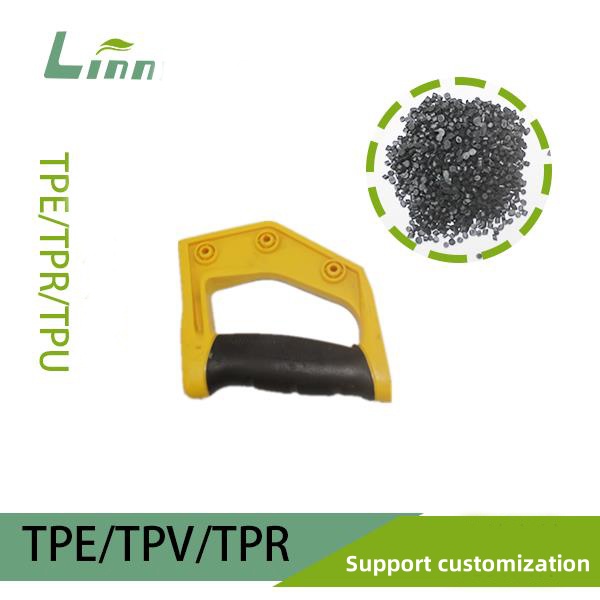
Challenges and Considerations
Combining ABS and TPE isn’t always smooth sailing:
Material Selection: Finding a TPE grade compatible with your ABS requires supplier data and testing.
Process Optimization: Balancing melt temperatures, speeds, and cooling takes time, potentially delaying production.
Cost Implications: Compatibilizers, surface treatments, or specialized TPEs increase material and processing costs.
Performance Trade-Offs: Blends often compromise ABS’s strength or TPE’s elasticity, limiting their use in high-performance applications.
Sustainability Challenges: Mixed ABS-TPE scraps are hard to recycle into high-value products, reducing their environmental benefit.
The Bigger Picture: Why Mixing ABS and TPE Matters
Successfully combining ABS and TPE is about creating functional, user-friendly, and cost-effective products. A well-executed combination, like a TPE-overmolded ABS handle, enhances ergonomics, durability, and market appeal. A poorly managed mix, however, can lead to defective parts, production delays, or customer dissatisfaction.
I’ve seen how solving these challenges can transform a project. A client making ABS-TPE medical device casings went from frequent delamination to a reliable product after switching to a compatible TPU and optimizing their mold design. It’s a reminder that material synergy drives innovation and quality.

Future Trends in ABS and TPE Combinations
The industry is evolving to make ABS-TPE combinations more seamless:
Advanced TPE Formulations: New TPE grades with built-in ABS compatibility are reducing the need for compatibilizers.
Smart Molding Machines: Real-time sensors improve process control, minimizing defects like warping or delamination.
Sustainable Recycling: Chemical recycling and advanced sorting are improving the quality of mixed ABS-TPE regrind, making it viable for higher-value applications.
Bio-Based Materials: Bio-ABS and bio-TPEs are emerging, aligning with sustainability goals while maintaining performance.
I recently spoke with a supplier developing self-bonding TPEs that adhere to ABS without surface treatments, which could streamline production. These advancements are exciting and promise to simplify ABS-TPE integration.
Final Thoughts
Mixing ABS and TPE can produce outstanding results when approached thoughtfully, particularly through overmolding or co-extrusion, where the materials complement each other’s strengths. Physical blending or recycling, however, often leads to poor performance unless compatibilizers and precise processing are used. By selecting compatible materials, optimizing processes, and testing rigorously, you can create products that combine ABS’s rigidity with TPE’s flexibility for applications from electronics to automotive.
From my years in the industry, I’ve learned that success with ABS and TPE hinges on preparation and collaboration. Work closely with your material suppliers, invest in testing, and don’t hesitate to tweak processes or use compatibilizers. Whether you’re designing a soft-touch gadget or recycling scraps, the right strategy will ensure your project delivers performance, durability, and customer satisfaction.
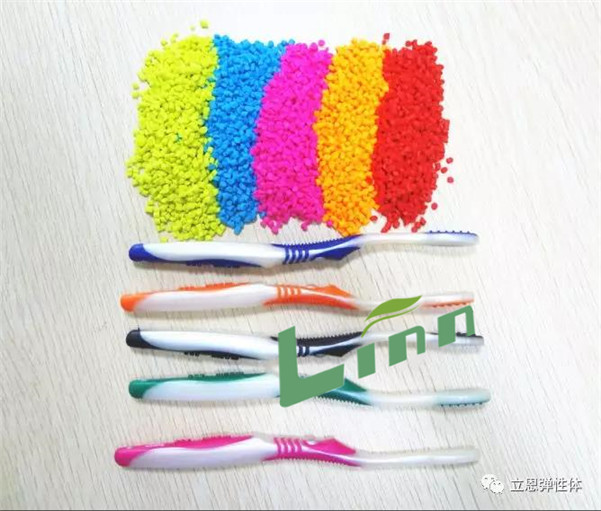
Related Questions and Answers
Q: Can I blend ABS and TPE without compatibilizers?
A: It’s possible, but the blend will likely be brittle, streaky, or weak due to immiscibility. Adding a compatibilizer like maleic anhydride-grafted ABS improves mechanical properties.
Q: What’s the best TPE type for overmolding onto ABS?
A: SBC-based TPEs or TPUs with styrene content are ideal, as they bond well to ABS. Suppliers like Kraton or BASF offer grades optimized for ABS overmolding.
Q: How do I test if my ABS-TPE bond is strong enough?
A: Perform peel tests (e.g., ASTM D903) for overmolded parts and tensile/impact tests for blends. Simulate environmental conditions like heat or humidity to ensure durability.
Q: Is it cost-effective to recycle mixed ABS and TPE scraps?
A: Mixed regrind is suitable for low-performance parts, but sorting or compatibilizers add cost. Chemical recycling may improve quality but is still emerging.





